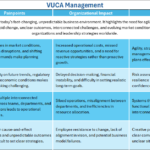Crying with Wolves: How Leaders Can Break Free from the Negativity Trap

From Negativity to Growth: A Coaching Journey with Nathalie
Negativity can be a powerful force, often leaving us feeling stuck, overwhelmed, and disconnected from solutions. In my work as a coach, I encountered this challenge with Nathalie, an operations manager leading a team of five supervisors. Her story is one of navigating workplace stress, breaking the cycle of negativity, and transforming personal and professional relationships through coaching.
Nathalie’s Story: A Cycle of Stress and Negativity
Nathalie came to me feeling overwhelmed and emotionally drained. Her job as an operations manager was demanding, requiring her to juggle tight deadlines and lead a team of supervisors through daily challenges. Team meetings, intended to be collaborative problem-solving sessions, often turned into unproductive venting exercises. Instead of fostering solutions, these discussions amplified stress and frustration.
Outside of work, Nathalie sought comfort by sharing her struggles with friends and family. However, their responses often reinforced her negative emotions, leaving her feeling even more stuck. Comments like, “That sounds terrible!” or “I can’t believe you have to deal with this!” validated her feelings but did little to offer relief or perspective.
Nathalie realized that this cycle of negativity wasn’t just affecting her—it was impacting her team’s morale and her ability to lead effectively. She reached out for coaching, hoping to find a way forward.
The Psychology of Negativity
Nathalie’s experience is not unique. Several psychological factors can trap individuals and teams in cycles of negativity:
- Negativity Bias: Humans are wired to pay more attention to negative experiences than positive ones. This bias, while evolutionarily protective, can become overwhelming in high-stress environments like Nathalie’s workplace.
- Emotional Contagion: Negativity spreads easily in groups. When one person shares a negative experience, others often mirror those emotions, creating a feedback loop that reinforces frustration and hopelessness.
- Stress and Cognitive Load: Chronic stress limits our ability to think clearly, making it harder to identify solutions or shift perspectives.
- Social Validation of Negativity: Sharing struggles with friends and family can be therapeutic, but it can also backfire when their well-intentioned support amplifies negative emotions instead of fostering resilience.
Understanding these psychological dynamics was key to helping Nathalie break the cycle.
Coaching Nathalie: A Path to Positivity
Step 1: Building Awareness
The first step was helping Nathalie recognize the patterns of negativity in her thoughts, communication, and interactions. Through reflective exercises, she identified how her focus on problems overshadowed opportunities for solutions. I asked questions like, “What happens after you share these experiences? How do you feel afterward?” These prompts encouraged Nathalie to observe the emotional toll of dwelling on negativity.
Step 2: Reframing Challenges
We worked on shifting Nathalie’s focus from problems to possibilities. I introduced a simple yet powerful exercise: for every negative thought or experience she shared, she would identify one potential solution or positive outcome. For example, instead of saying, “The team never meets deadlines,” she reframed it as, “What small adjustments could we make to improve our timelines?”
We also incorporated gratitude exercises. At the end of each workday, Nathalie listed three positive moments or achievements, no matter how small. This practice helped her train her brain to notice and appreciate the good amidst the challenges.
Step 3: Emotional Regulation
Stress was a significant driver of Nathalie’s negativity. Together, we explored mindfulness techniques, such as deep breathing and brief meditation exercises, to help her regulate her emotions. Nathalie also practiced self-compassion, learning to treat herself with kindness rather than harsh criticism during difficult moments.
Step 4: Transforming Team Dynamics
In her role as a leader, Nathalie needed tools to shift her team’s dynamic. I suggested structuring team meetings with a solution-focused framework:
- Briefly share the issue.
- Collaboratively brainstorm potential solutions.
- Assign actionable steps.
This approach reduced unproductive venting and fostered a more constructive atmosphere. Nathalie also encouraged her team to recognize small wins and celebrate successes, creating a culture of positivity and progress.
Step 5: Engaging Friends and Family
Nathalie’s interactions with her loved ones required a subtle but significant shift. Instead of venting, she practiced sharing her challenges with a focus on seeking advice or solutions. Role-playing these conversations during coaching sessions helped Nathalie navigate them more intentionally. For instance, she might say, “Work has been tough this week, but I’m thinking about trying X to improve things. What do you think?”
The Results: A Ripple Effect of Positivity
Through coaching, Nathalie began to notice meaningful changes:
- Personal Growth: Nathalie felt more in control of her emotions and more capable of tackling workplace challenges. Her newfound awareness and practices helped her reduce stress and build resilience.
- Team Transformation: Her team meetings became more productive and collaborative. Supervisors felt more empowered to contribute solutions, and the team dynamic improved significantly.
- Healthier Relationships: By shifting how she shared her experiences, Nathalie fostered more constructive and supportive conversations with friends and family.
Perhaps most importantly, Nathalie rediscovered a sense of purpose and possibility in her role as a leader. She learned that while challenges are inevitable, how we approach them can make all the difference.
Reflections and Lessons
Nathalie’s journey offers valuable insights for leaders and individuals alike:
- Awareness is the First Step: Recognizing negative patterns is essential for breaking them.
- Focus on Solutions: Shifting from problems to possibilities can transform dynamics at work and home.
- Leadership is Contagious: A leader’s mindset and communication style set the tone for their team.
- Coaching Creates Change: With the right tools and support, even deeply ingrained habits can shift.
Negativity may be a natural response to stress, but it doesn’t have to define us. Through intentional effort, we can rewrite the narrative and create a ripple effect of positivity in our lives and the lives of those around us.
If you find yourself stuck in a cycle of negativity—whether at work or in your personal life—consider exploring coaching as a way to move forward. Together, we can uncover new perspectives, strategies, and opportunities for growth.




